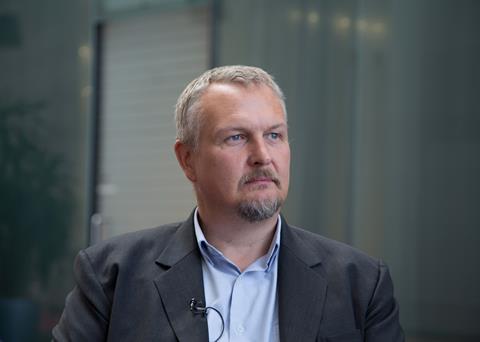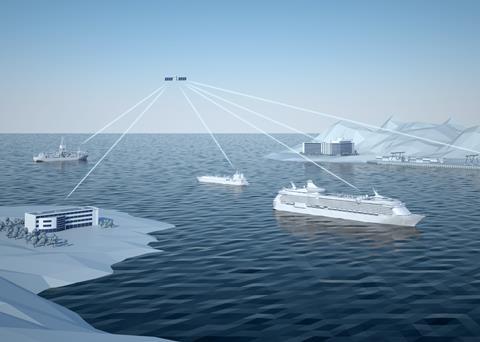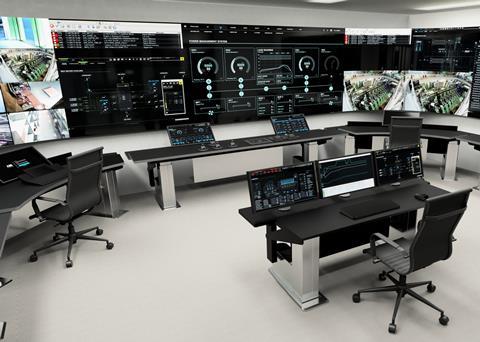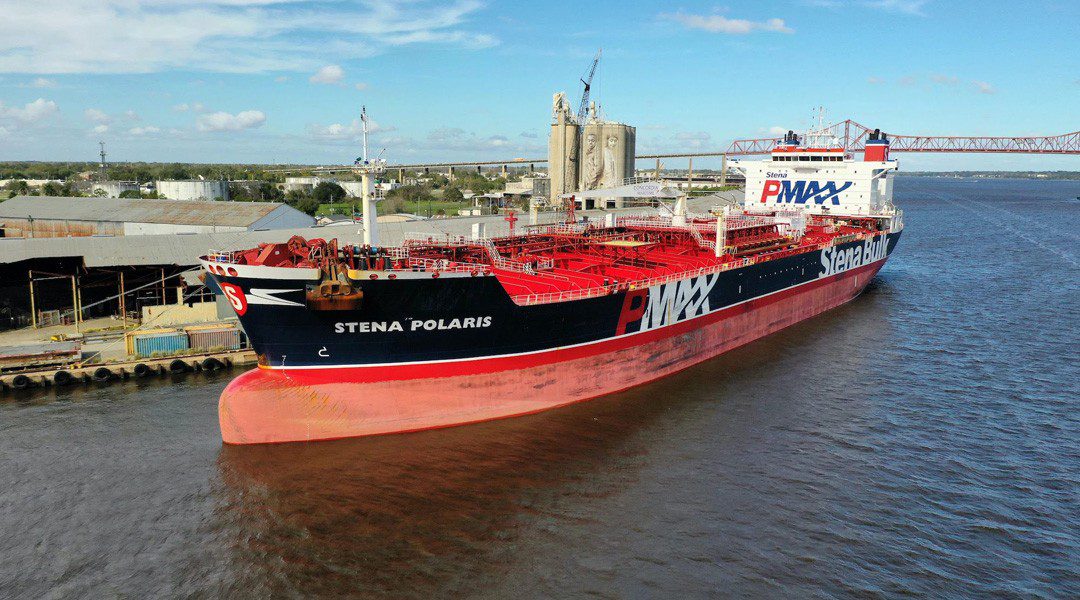Eero Lehtovaara, Head of Regulatory and Public Affairs at ABB Marine & Ports calls for greater collaboration within the industry to ensure regulatory alignment as the pace of technological development in the digitalisation space accelerates.
Eero Lehtovaara has a unique vantage perspective on the current state of developments in the digitalisation field. While Mr. Lehtovaara chairs One Sea, an industry alliance focused on the development of autonomous ships, and the EU research and development forum, the Waterborne Technology Platform, his responsibilities extend into other international forums.
Show Fullscreen

Source: ABB
Eero Lehtovaara, Head of Regulatory and Public Affairs at ABB Marine & Ports
He begins the interview by noting that the current expansion in digital tools had not been matched by an expansion in regulatory oversight over the sub-systems. “Since [the tools] fall outside the regulatory framework, nobody checks on them… and they’re not really tested [operating together].” While the functionality of sub-systems is certified, Lehtovaara notes that there are currently guidelines in place to govern how products should operate if the way they are used is altered after installation, for example.
The related risk of how serious risks can emerge if different systems are not designed to interact with each other is more widely understood by the industry. From a navigational perspective, imperfect interaction between navigational systems contributed to the grounding of the Royal Majesty cruise liner close to Nantucket off the Maine coast in 1995. However, there was also the simpler risk that by designing systems as silos, “we might be duplicating a lot of stuff on board, just because we want a certain information flow or certain sensor input, just within one setup, instead of sharing that fully”.
The appropriate response, Lehtovaara noted, would be to see the entire ship as a self-contained system. “The ship should be designed, built and tested as a whole system, meaning that as within the system boundaries, one change in variable will affect the rest.”
Such a change would create an opportunity for classification societies to extend their quality verification services to all of these new digital technologies. Classification societies could offer third-party quality assurance to reassure a ship owner that a product or service would do what was promised.
Lehtovaara went further, suggesting that the application of such a system analysis approach would also have potential applicability to some of the different levels of autonomy identified in the IMO’s unfairly maligned Marine Autonomy Surface Ships (MASS) scoping exercise.
“If we applied the design principles of a system to any shape, whether it’s uncrewed, or fully manual, and something in between, then we wouldn’t be able to evaluate them in a different way.”
Autonomy
However, Lehtovaara also noted that the application of ship as a system methodologies would also offer a potential solution to questions about defining the precise level of interaction between a human crew member and digital solutions.
“For me personally, I don’t think that the level of technology on board a ship is directly dependent on where you have the human in the loop. The technology will still need to be there, regardless of whether all those humans are on board or not, or where they are on board.”
Lehtovaara applies a similar pragmatic approach to legalistic arguments about the locus of control aboard a vessel for autonomous and semi-autonomous vessels. “As a basic principle, a human being is always going to be responsible, whether that’s the owner, or the beneficial cargo owner, or even the captain or an operator,”
Regulatory environment
Turning to the international regulatory environment, Lehtovaara noted there was a broad consensus about the direction of travel within the international community. “I think that that, in reality, the big picture, we are quite aligned, and I don’t see much politics there,” he said.
“I think that the largest differences are around expectations about the speed with which fully autonomous, autonomous uncrewed, and autonomous system will be introduced.”
Lehtovaara added that serious technology suppliers were working closely with the regulatory authorities, but notes that there is scope for the engagement to deepen. We need to help the regulators to understand the technology so that they can ask the right questions before framing regulations.
This was particularly relevant as the pace of technological development was leading to a slight lag between technological solutions, and the introduction of a regulatory framework that can support new technologies.
Lehtovaara did recognise that the pace of consideration of regulatory developments varied, which was only natural considering the range of flag state, classification society and IMO stakeholders he was engaging with. “Although our primary focus is at the IMO level, and its constituent parts, I see a relevant role for other organisations. We’re working with the USCG, the EU and others, for example”.
Lehtovaara emphasised that transparency was likely to be the best approach to ensure that the regulatory environment would be open and continue to offer a level playing field for different market participants, as well as potential new entrants.
Technical engagement
However, Lehtovaara did note that there was scope for more detailed engagement within the industry itself, particularly as the range of solutions under development was continuing to proliferate.
He gave the concrete example of internal discussions within ABB itself about definitions of live, of immediate, and control, in the context of remotely operated systems.
“If we’re talking about remote operations, I think that the ship needs to be almost fully autonomous to be able to be operated remotely. So, it needs to have certain technology qualities that ensures a certain level of autonomy for the ship that is operated because you cannot have live 100% control of everything on board.”

Source: ABB
Eero Lehtovaara sees an increasing need for shipyards, OEMs, ship owners and ports to come together and share information. “If we could understand the issues confronting other parts of the sector and work together, that would help us respond, considering the sheer pace of technology development.”
“Some of our software engineers offered a definition of live where you have control that is faster than 40 microseconds,” he said drily.
Lehtovaara noted that there was a need for wider industry agreement around such definitions as the scope of autonomous and semi-autonomous systems extends from the navigation department into the engineering domain.
The development of engine room solutions that stretch the boundary between monitoring and control was an area of interest.
“Where is the line between monitoring operations and operating? And what are the legal implications of [introducing solutions that cross the line]. I can see that that we will have some interesting discussions going further.”
Looking further ahead, Lehtovaara wondered whether some engineering functions could simply be transferred to the fleet control centre. Giving the hypothetical example of full-electric ferries operating on a short-sea route, such as the cross-Channel route between Calais and Dover, Lehtovaara wondered whether it might not be possible to locate the chief engineer role onshore.
“Would we actually need anybody in the engine room, if that was even what it was called without an engine, particularly as software control could just as easily be carried out from the fleet control centre.”

Source: ABB
Eero Lehtovaara wondered whether wider industry agreement around the scope of autonomous and semi-autonomous systems was needed as remote engine room solutions stretch the boundary between monitoring and control.
The interconnections between different systems that Lehtovaara described from a navigation perspective would also potentially benefit propulsion and auxiliary system solutions from a system-level perspective, although the exact layouts would vary between container ships, bulkers, drill ships and passenger vessels.
The need for such a system level approach might also offer a potential solution to another pressing issue confronting the community. The issue of how to ensure that different sub-systems and solutions successfully operate with each other also has a temporal element, as new vessels entering the fleet at present may still be in service well after 2050.
Lehtovaara recognised that this issue is being considered by the leading classification societies, with a focus on developing an understanding of these complex systems. Similar work is being undertaken at the IMO, while DG MOVE within the European Commission, are already starting to work on this, and how we should we work with it.
“But before we act, we need to be clear what we’re talking about and how we should approach that. Which is what I meant when I said the dialogue between the various stakeholders is imperative. And it needs to be dynamic, it needs to be active is to happen with high frequency so that we all understand what we’re doing.”
Industry collaboration
Lehtovaara concluded by calling for the industry to come together and to share information.
“The big shipyards, equipment manufacturers, ship owners and ports, all need to look at the big picture together, because we all have our own issues. If we could understand the issues confronting other parts of the sector and work together, that would help us respond, considering the sheer pace of technology development.”





